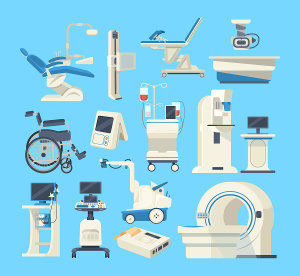From the August 2021 issue of HealthCare Business News magazine
By Les Jebson
Growing dialogue is underway throughout the imaging arena in regard to the viability, fiscal sustainability and safety of utilizing technologists in multiple modalities.
Specifically, can and should healthcare organizations assign more than one imaging modality to technologists within a given work shift? Or even move to different locations and staff different modalities on varied work assignments?



Ad Statistics
Times Displayed: 45731
Times Visited: 1370 MIT labs, experts in Multi-Vendor component level repair of: MRI Coils, RF amplifiers, Gradient Amplifiers Contrast Media Injectors. System repairs, sub-assembly repairs, component level repairs, refurbish/calibrate. info@mitlabsusa.com/+1 (305) 470-8013
Interestingly enough, discussion and contemplation surrounding the topic of multimodality technologists isn’t new. Cited articles on
Pubmed exist from the late 1980s asking this very question. At that time, the discussion surrounded critical staffing shortages across the country from conventional X-ray to MR imaging, prompting the argument for development of multimodal technologists.
A recent cursory review of the digital media social forum Reddit, shows an imaging technology forum with over 50,000 imaging professionals from around the world. Strong and varied opinions are shared in regard to the safety, training and market demand for imaging technologists with demonstrated competencies. Of particular note are comments from imaging technologists from the European Union.
In many of the European Union nations, it is actually standard practice to hire technologists for multiple modalities. In fact, the educational curriculums are designed to establish core competencies in digital X-ray, CT, MR, ultrasound and radiotherapy. Some countries have specific rules regarding technologists not being able to staff more than two modalities in a given work period, unless it is emergent.
Rather than make a bold declaration for or against the multimodality technologist, a brief examination of current and future regional and national healthcare market trends may shed objective light on this provocative topic.
There are workforce considerations in regard to both the availability of competent technologists and patient demand trends. Considering the data surrounding an aging demographic nationally, it stands to reason that utilization and demand should continue to increase. This, arguably, will only be compounded through continued growth and migration of clinical services into suburban America through outpatient care delivery.
Industry analysts anticipate 6-9% annual growth in demand for new MR and CT scanners across North America through the year 2027, according to Fortune Business Insights. Technological advancements in the very machines themselves warrants continuing education and competency assessment. Ergo, one may contend that as the imaging modalities become more sophisticated, the level of skill and competency required may also increase.

